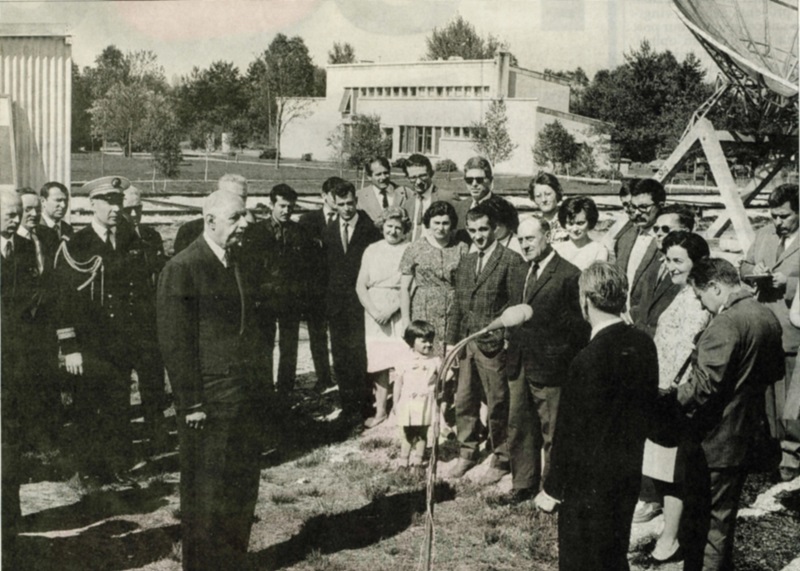At the time, it was the largest antenna in the world completely devoted to astronomy : with a surface equivalent to a 94 m diameter parabolic mirror, it is larger than the Lowell Telescope (76 m, Manchester, United Kingdom, inaugurated in 1957) and also the Parkes radio telescope (64 m, Australia, inaugurated in 1961).

With its collecting surface of 7000 m2 and impressive dimensions (300 m x 35 m in the case of the main spherical mirror, 200 m x 40m et 400 tonnes in the case of the mobile deflector), the Nançay radiotelescope is today the fourth largest telescope single mirror telescope in the world.
While its girders and pylons date from the original construction and defy the ravages of time, the critical unit, the signal receivers and analyzers, are constantly updated and improves in order to remain scientifically competitive and able to attack new domains in astrophysics and cosmology.
50 years later …
Today, the large radio-telescope is renowned world-wide for its contributions to the study of pulsars and theories of gravitation. In these domains, it systematically furnishes the best data.
It makes invaluable contributions to our understanding of comets, an in particular that of their water content ; it is so adaptable and easily programmed that one can direct it rapidly to new phenomena, supernova explosions, observations of gamma ray bursts, and even to follow over many years the variations in emission of matter falling onto certain black holes.
It is also used to test new receivers, and to develop signal processing trechniques : this all contibutes to the creation of new generations of radiotelescopes.
Last update on 15 May 2015
